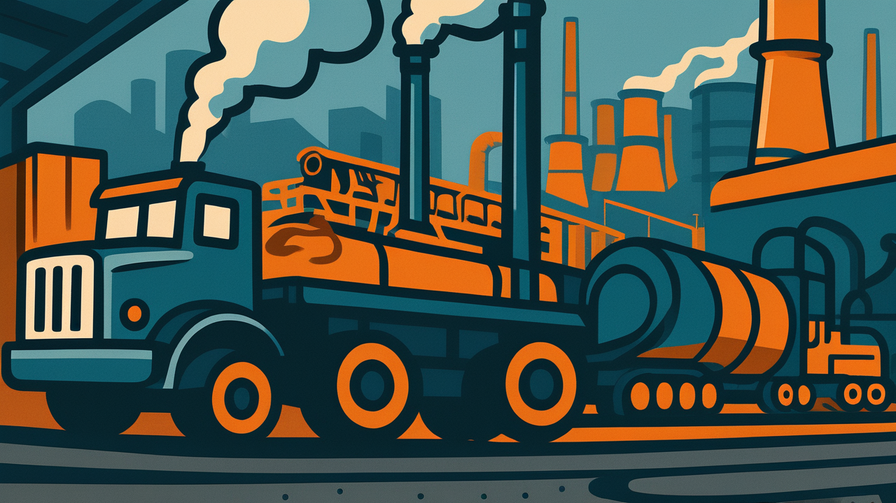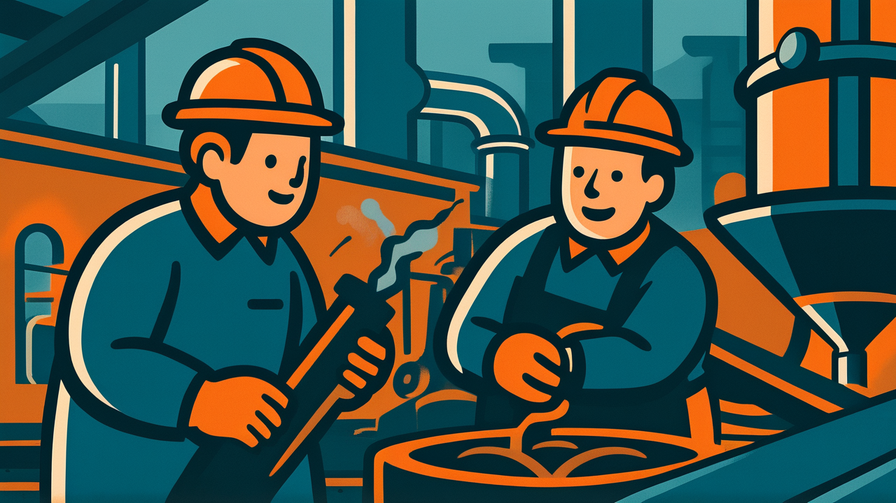[Disclaimer] This article is reconstructed based on information from external sources. Please verify the original source before referring to this content.
News Summary
The following content was published online. A translated summary is presented below. See the source for details.
The White House has highlighted growth in the American steel industry, attributing improvements to current administration policies. Steel production, employment in steel mills, and industry investments have shown positive trends. The administration points to trade measures including tariffs on imported steel, renegotiated trade agreements, and “Buy American” policies as key factors. US steel companies report increased capacity utilization and new facility investments. The domestic steel industry, which employs approximately 140,000 workers directly and supports hundreds of thousands more indirect jobs, has seen renewed activity. However, these policies have also affected steel prices and relationships with trading partners, creating ongoing debates about the best approach to supporting American manufacturing while maintaining international trade relationships.
Source: White House News
Our Commentary
Background and Context

Steel is one of the most important materials in modern society – it’s in cars, buildings, bridges, appliances, and countless other products. The US steel industry has faced challenges for decades as production shifted to countries with lower labor costs.
Understanding steel industry dynamics helps us grasp broader economic concepts like global trade, manufacturing jobs, and industrial policy. When steel is made in America, it supports not just steelworkers but also miners who extract iron ore, transportation workers who move materials, and engineers who design products.
The debate over protecting domestic steel involves weighing different priorities: preserving American jobs, ensuring affordable materials for US manufacturers who use steel, and maintaining good relationships with trading partners.
Expert Analysis
Current policies affecting the steel industry include tariffs (taxes on imported steel), which make foreign steel more expensive and thus help American steel compete on price. Supporters argue this protects American jobs and national security – we need domestic steel production capacity for defense needs.
Critics point out that while steel producers benefit, companies that use steel to make products (like car manufacturers or construction companies) face higher costs. This can make their products more expensive or less competitive globally.
The “Buy American” policies require government-funded projects to use American-made steel, creating guaranteed demand for domestic producers. This helps steelworkers but may increase project costs for taxpayers.
Additional Data and Fact Reinforcement
The US produces about 85-90 million tons of steel annually, ranking fourth globally after China, India, and Japan. China alone produces over half the world’s steel, creating global oversupply issues that affect prices worldwide.
American steelworkers earn an average of $75,000 annually, well above the national median income, making these some of the best-paying blue-collar jobs available. Each steel job supports an estimated 7-10 jobs in related industries.
Modern American steel mills are highly automated and environmentally cleaner than older facilities. Electric arc furnaces, which recycle scrap steel, now produce about 70% of US steel, requiring less energy than traditional blast furnaces.
Related News
The steel industry discussion connects to broader manufacturing trends. The US has seen efforts to “reshore” manufacturing – bring production back from overseas. This includes semiconductors, medical supplies, and other critical goods.
Environmental considerations are increasingly important. Steel production accounts for about 7% of global carbon emissions. American mills generally have lower emissions than those in countries with less stringent environmental regulations, adding another dimension to the domestic production debate.
Summary

The steel industry’s performance reflects larger questions about America’s economic future: How do we balance protecting domestic jobs with participating in global trade? While current policies have supported steel industry growth and employment, they’ve also created trade tensions and higher costs for steel users. Understanding these trade-offs helps us think critically about economic policy. For students considering careers in manufacturing, engineering, or policy, the steel industry exemplifies how government decisions, global economics, and technology intersect to shape opportunities.
Frequently Asked Questions
Why does steel production matter if we can import it cheaper? Beyond jobs, domestic steel production is considered important for national security (military equipment needs), infrastructure resilience, and maintaining industrial knowledge and capabilities.
How do tariffs actually work? When foreign steel arrives at US ports, importers must pay the government a percentage of the steel’s value (often 25% or more). This added cost makes imported steel more expensive, helping American steel compete on price.
What careers exist in modern steel production? Today’s steel industry needs engineers, computer specialists for automated systems, environmental scientists, metallurgists, and skilled equipment operators – it’s much more high-tech than the traditional image of steelworking.


